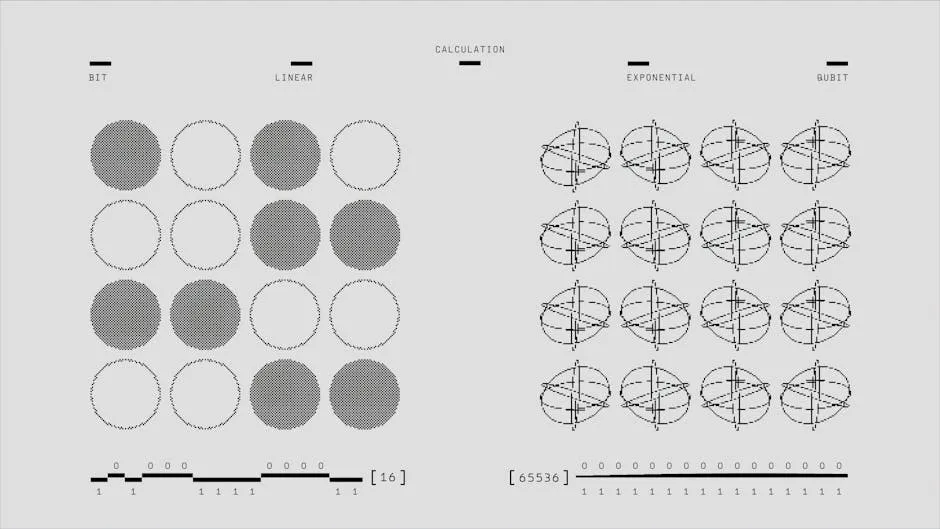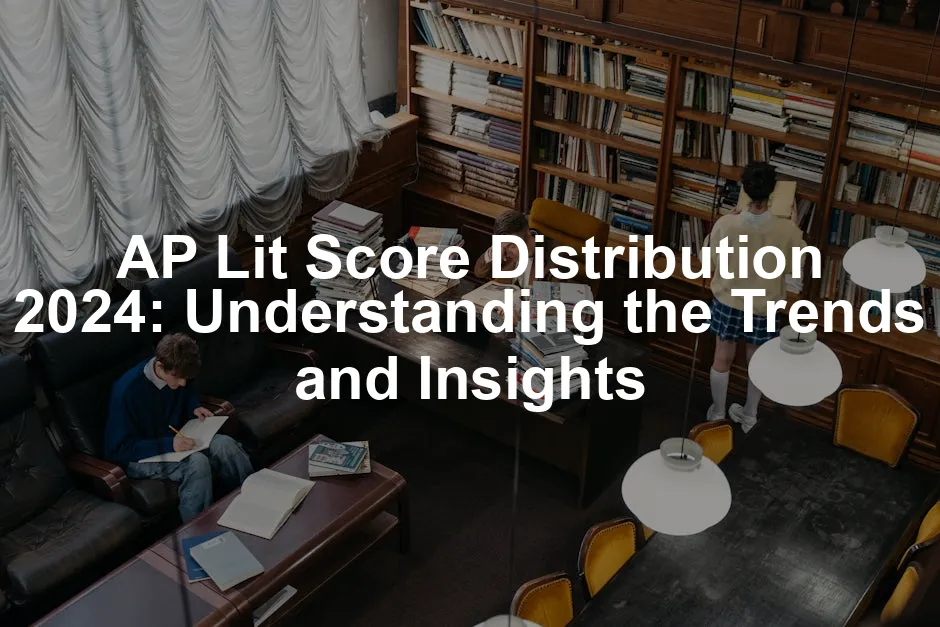Introduction
The AP Literature score distribution for 2024 is vital for students and educators. By analyzing score distributions, we can pinpoint performance trends. This knowledge helps in making informed choices about college admissions and course selections. If you’re preparing for the exam, consider grabbing an AP Literature Exam Prep Book to kickstart your study journey!

Summary and Overview
In 2024, the AP Literature exam showed notable trends compared to previous years. The percentage of students earning scores of 3 or higher remained steady, reflecting consistent performance. However, the percentage of students achieving a score of 5 increased, indicating a rise in high-achieving students. This trend has significant implications for college admissions. Colleges often look at these scores as part of their selection criteria, making them crucial for applicants. Understanding score distributions enables students and educators to gauge overall achievement levels and identify areas for improvement.
To enhance your understanding of literary texts, consider using a Literary Analysis Workbook. It offers structured exercises to sharpen your analytical skills and boost your confidence for the exam.
For more insights on how score distributions affect college admissions, check out this article on AP score distribution 2024.

AP Literature Exam Overview
Purpose and Structure of the AP Literature Exam
The AP Literature exam aims to assess students’ analytical skills and understanding of literary texts. It consists of two main parts: multiple-choice questions and free-response essays. The multiple-choice section tests comprehension and analysis of poetry and prose. The free-response section includes prompts that require students to produce in-depth literary analysis. Each section contributes to the overall score, with essays often weighted more heavily than multiple-choice questions. This structure encourages a comprehensive understanding of literature.

Importance of the AP Literature Score Distribution
Score distributions offer valuable insights into how students perform on the AP Literature exam. They help identify trends in college readiness and reflect changes in curriculum effectiveness. For educators, these distributions inform teaching strategies and highlight areas needing more focus. For students, understanding score distributions aids in academic planning. It provides a benchmark for personal improvement and preparation strategies, ensuring they are well-equipped for college-level coursework.

2024 AP Literature Score Distribution Analysis
Overview of 2024 Score Distribution
In 2024, the AP Literature exam saw varied results. About 13.7% of students earned a score of 5, a notable increase from 12.5% in 2023. Meanwhile, 26.9% received a score of 4, while 31.8% scored a 3. The percentages for scores of 2 and 1 were 16.5% and 11.1%, respectively. Overall, 72.4% of students achieved a score of 3 or higher, maintaining a steady trend compared to the previous year. This data indicates a consistent level of performance among students, showcasing a robust understanding of literary analysis.

To ensure you’re prepared, having an AP English Literature & Composition Study Guide can be a game changer. It provides essential tips and strategies tailored to the exam format.
Performance Insights
Examining high-performing demographics reveals interesting patterns. Students from schools with advanced placement programs performed better on the exam. Additionally, those who participated in rigorous literature courses showed higher scores, particularly in essay responses. Factors influencing performance include recent curriculum changes and exam modifications. The College Board introduced a new scoring methodology aimed at reflecting a more accurate assessment of student skills. This shift may have contributed to the slight rise in scores.

Notable Trends and Observations
A significant trend this year is the increase in participation rates, with more students taking the AP Literature exam than in previous years. This uptick suggests a growing interest in literature studies and the benefits of advanced placement courses. However, the data also highlights disparities in performance among different demographic groups. While overall scores improved, some underrepresented groups still lagged behind, sparking discussions on equity in education. Understanding these trends can help educators tailor their approaches to support all students effectively.

Comparison with Other AP Subjects
Overview of Performance Across Subjects
When comparing AP Literature to other AP subjects in 2024, it stands out for its relatively high percentage of students scoring 3 or above. For instance, AP English Language and Composition reported a 54.6% pass rate, while AP Calculus AB had a 64.4%. These figures underline the rigorous nature of AP Literature, which demands strong analytical and writing skills.

| Exam | 5 | 4 | 3 | 2 | 1 | 3+ |
|---|---|---|---|---|---|---|
| AP English Literature & Composition | 13.7% | 26.9% | 31.8% | 16.5% | 11.1% | 72.4% |
| AP English Language & Composition | 9.8% | 21.4% | 23.5% | 28.8% | 16.6% | 54.6% |
| AP Calculus AB | 21.4% | 27.8% | 15.3% | 22.7% | 12.9% | 64.4% |
| AP Biology | 16.8% | 23.1% | 28.4% | 21.7% | 10.0% | 68.3% |
This table illustrates the performance across subjects, emphasizing that while AP Literature maintains a strong achievement rate, other subjects also showcase high levels of student competency. Understanding these comparisons aids students in making informed decisions about their AP course selections. By the way, if you’re looking for a cozy reading experience while studying, a Cozy Blanket can make all the difference!

Factors Influencing AP Literature Scores
Curriculum Changes
In recent years, the AP Literature curriculum has undergone significant changes. The College Board updated the exam format to emphasize critical thinking and analytical skills. This shift encourages a deeper understanding of texts rather than rote memorization. As a result, students must now engage with literature in more nuanced ways. These modifications impact how students prepare. They require a greater focus on literary analysis and interpretation. Teachers also adjust their lesson plans to align with these new standards. This transition can create challenges for both students and educators as they adapt to the evolving expectations.

Student Preparation and Resources
Access to resources plays a crucial role in student performance on the AP Literature exam. Students with access to tutoring, study materials, and practice exams often score higher. Quality resources help reinforce learning and build confidence. Furthermore, skilled teachers can significantly influence student outcomes. Experienced educators understand the nuances of literary analysis and can guide students effectively. They provide tailored feedback on writing assignments, helping students improve their essays. Conversely, schools with limited resources may struggle to provide adequate support. This disparity can lead to varied performance levels among different student demographics.

For an effective study plan, a Study Planner can help you organize your time efficiently and ensure you cover all necessary materials before the exam.
Exam Administration and Scoring Methodology
The College Board’s scoring methodology for 2024 reflects a commitment to fair and accurate assessments. This year, the College Board implemented evidence-based standard setting. This new approach utilizes extensive data to inform scoring decisions. By analyzing student performance across various subjects, the College Board aims to achieve consistent and reliable scoring. Changes in scoring might influence future score distributions. With a focus on aligning scores with actual student abilities, we may see shifts in how students perform. This could lead to a more equitable representation of students’ literary skills across diverse backgrounds. Understanding these updates is vital for students and educators alike as they navigate the evolving landscape of AP exams.

Implications for Students and Educators
For Students
Understanding the 2024 AP Literature score distribution is key for your academic planning. By analyzing the score data, you can identify where you stand compared to your peers. This insight allows you to set realistic goals for improvement.
If you notice that many students scored a 3 or higher, that’s encouraging! It indicates that the exam is manageable with the right study strategies. Focus on areas where students commonly excelled. For instance, if many high scorers performed well on essay prompts, prioritize refining your writing skills. Try practicing with past exam questions and seeking feedback from teachers.
Additionally, consider joining study groups. Discussing literature with peers can enhance your understanding. Don’t hesitate to ask for help when needed. Remember, consistent practice and seeking resources can elevate your performance in future exams. For those late-night study sessions, a Reading Lamp can provide the perfect amount of light without straining your eyes.

For Educators
The score distribution data provides valuable insights for refining curriculum and teaching strategies. If you notice trends, such as a large percentage of students scoring low on particular essay types, it might be time to adjust your instructional focus. Incorporate more targeted practice on those essay formats.
Consider offering workshops that help students understand literary analysis better. Use the data to identify which skills need reinforcement and adapt lesson plans accordingly. Encouraging collaborative learning can also benefit students who struggle with certain concepts.
Moreover, provide students with clear pathways for improvement. Regularly share data insights with them to foster a growth mindset. Emphasize that understanding their scores is vital for achieving higher marks in future exams. By utilizing score distribution data effectively, you can empower your students to reach their full potential. And don’t forget to encourage them to take breaks! A Desk Plant can refresh the study environment and keep the air clean!

Conclusion
The 2024 AP Literature score distribution offers essential insights for both students and educators. By understanding these trends, students can better strategize their study efforts, while educators can refine teaching approaches. This data not only shapes academic strategies but also plays a significant role in college admissions decisions. Embrace these insights as tools for growth, ensuring that both students and educators are equipped for future success. And speaking of success, don’t forget to keep your study space organized with a Desk Organizer to help you stay on track!

FAQs
What is the significance of the AP Literature score distribution?
The AP Literature score distribution serves as a vital tool for students and colleges. For students, it provides insight into their performance relative to peers. Understanding where they stand can guide their study habits and preparation strategies. Colleges use these distributions to evaluate applicants. High scores can enhance a student’s application, showcasing their readiness for college-level coursework. In essence, this data reflects overall academic trends and can influence future admissions decisions.
How can students improve their AP Literature scores?
Improving AP Literature scores involves targeted strategies. First, practice is key. Use past exam questions to familiarize yourself with the format. Additionally, consider joining study groups for collaborative learning. Engaging with peers can deepen your understanding of complex texts. Online resources like practice quizzes and study guides can provide further support. Lastly, seek feedback from teachers. Constructive criticism on essays can help refine your writing skills, boosting your overall performance.
How does the AP Literature exam format affect score distributions?
The format of the AP Literature exam significantly impacts score distributions. The exam consists of multiple-choice questions and free-response essays. Each section tests different skills. For example, the multiple-choice section assesses comprehension and analysis, while the essays require in-depth literary critique. If students struggle with one format, it can skew overall scores. Thus, understanding the exam structure helps students focus their preparation on weaker areas, potentially enhancing their scores.
When will the 2024 AP Literature scores be released?
Typically, AP Literature scores are released in early July. This timeline allows students to access their results shortly after the exam. The exact date may vary yearly, but students can expect to find their scores available through their College Board accounts. Keeping an eye on official announcements ensures you won’t miss out on this important information.
Are there any notable changes to the AP Literature curriculum for 2024?
Yes, there are some updates to the AP Literature curriculum for 2024. The College Board has made adjustments to emphasize critical thinking and analytical skills. These changes aim to foster a deeper understanding of texts rather than relying on rote memorization. Students may notice a shift in exam questions that align with these updates. This evolution requires students to adapt their study methods, focusing more on literary analysis and interpretation.
What resources are available for AP Literature exam preparation?
Several resources can aid in AP Literature exam preparation. Start with official College Board materials, including course descriptions and sample questions. Study guides from reputable publishers offer structured content. Online platforms such as Khan Academy provide interactive learning experiences. Additionally, consider enrolling in review courses or webinars that focus on exam strategies. Utilizing these resources will help reinforce your understanding and better prepare you for the exam.
How does the 2024 AP Literature score distribution compare to previous years?
The 2024 AP Literature score distribution shows positive trends compared to previous years. The percentage of students earning scores of 3 or higher has remained steady, indicating consistent performance levels. However, there has been an increase in the percentage of students scoring a 5. This rise reflects improved preparation and a stronger grasp of literary analysis among students. Overall, these trends suggest a growing proficiency in AP Literature across the board.
Please let us know what you think about our content by leaving a comment down below!
Thank you for reading till here 🙂
All images from Pexels




